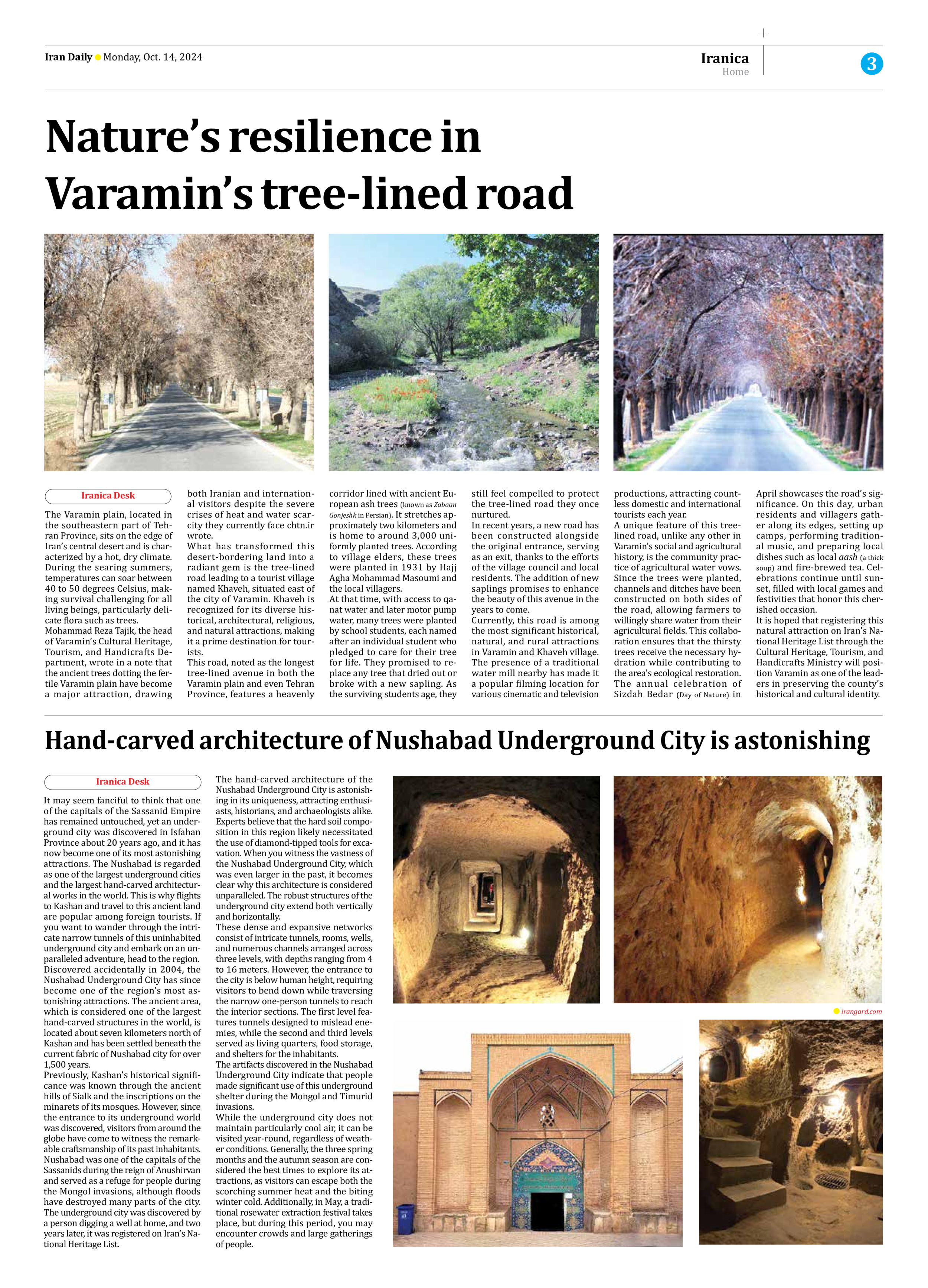
Nature’s resilience in Varamin’s tree-lined road
The Varamin plain, located in the southeastern part of Tehran Province, sits on the edge of Iran’s central desert and is characterized by a hot, dry climate. During the searing summers, temperatures can soar between 40 to 50 degrees Celsius, making survival challenging for all living beings, particularly delicate flora such as trees.
Mohammad Reza Tajik, the head of Varamin’s Cultural Heritage, Tourism, and Handicrafts Department, wrote in a note that the ancient trees dotting the fertile Varamin plain have become a major attraction, drawing both Iranian and international visitors despite the severe crises of heat and water scarcity they currently face chtn.ir wrote.
What has transformed this desert-bordering land into a radiant gem is the tree-lined road leading to a tourist village named Khaveh, situated east of the city of Varamin. Khaveh is recognized for its diverse historical, architectural, religious, and natural attractions, making it a prime destination for tourists.
This road, noted as the longest tree-lined avenue in both the Varamin plain and even Tehran Province, features a heavenly corridor lined with ancient European ash trees (known as Zabaan Gonjeshk in Persian). It stretches approximately two kilometers and is home to around 3,000 uniformly planted trees. According to village elders, these trees were planted in 1931 by Hajj Agha Mohammad Masoumi and the local villagers.
At that time, with access to qanat water and later motor pump water, many trees were planted by school students, each named after an individual student who pledged to care for their tree for life. They promised to replace any tree that dried out or broke with a new sapling. As the surviving students age, they still feel compelled to protect the tree-lined road they once nurtured.
In recent years, a new road has been constructed alongside the original entrance, serving as an exit, thanks to the efforts of the village council and local residents. The addition of new saplings promises to enhance the beauty of this avenue in the years to come.
Currently, this road is among the most significant historical, natural, and rural attractions in Varamin and Khaveh village. The presence of a traditional water mill nearby has made it a popular filming location for various cinematic and television productions, attracting countless domestic and international tourists each year.
A unique feature of this tree-lined road, unlike any other in Varamin’s social and agricultural history, is the community practice of agricultural water vows. Since the trees were planted, channels and ditches have been constructed on both sides of the road, allowing farmers to willingly share water from their agricultural fields. This collaboration ensures that the thirsty trees receive the necessary hydration while contributing to the area’s ecological restoration.
The annual celebration of Sizdah Bedar (Day of Nature) in April showcases the road’s significance. On this day, urban residents and villagers gather along its edges, setting up camps, performing traditional music, and preparing local dishes such as local aash (a thick soup) and fire-brewed tea. Celebrations continue until sunset, filled with local games and festivities that honor this cherished occasion.
It is hoped that registering this natural attraction on Iran’s National Heritage List through the Cultural Heritage, Tourism, and Handicrafts Ministry will position Varamin as one of the leaders in preserving the county’s historical and cultural identity.







